The Best Racing Seats
Get in, sit down, shut up, and hold on: here are the best racing seats for your ride.
People spend big money on their cars: the U.S. parts and accessory market was almost $150 billion dollars in 2019. But I’m amazed racing and other aftermarket seats are a small part of that vast sum. After all, it’s very literally where the driver comes into contact with the car, and if you’re doing any kind of competitive or seriously sporting driving, like track days, autocross, or frequently tearing up your favorite twisty roads, you need a racing seat.
But which seat? I’ve broken it down into a few categories, so let’s get started.
Table of contents
- 1. Best Aluminum Track-Only Seat: Kirkey Seats
- 2. Best Composite Track-Only Seat: MOMO Daytona
- 3. Best Hybrid Seat: Sparco R333
- 4. Best Hybrid Seat for Big Folk: Sparco Chrono
- 5. Best Off-Road Racing Seat: Kirkey Racing “9” Series
- 6. Best “Hybrid” Off-Road Racing Seat: Rugged Ridge
- 7. Best Value Hybrid Seat: Sparco R100
- What is a Racing Seat?
- Why You Should Get a Racing Seat:
- What to Look for in a Racing Seat:
1. Best Aluminum Track-Only Seat: Kirkey Seats
For 25 years, Kirkey has been a much-recommended racing seat, and you’ll find them in thousands of club-level racecars at autocross, sprint, and SCCA races. Why? They’re hand-made TIG and MIG-welded aluminum at surprisingly affordable prices.
Aluminum is good because it’s stronger than fiberglass and lighter, while being more comfortable than steel. They’re designed to work with other safety equipment, and they don’t adjust or recline: you order the correct angle, height, width, and other measurements, so you fit the seat, not the other way around. Once you realize that, you’ll understand what a solid value Kirkey represents, as it's infinitely customizable so you can get the perfect seat no matter what kind of racing you do, what size your body is, or what kind of car you have.
Pros | Solid construction, low price, configurable |
Cons | You need to be a knowledgeable buyer and will likely need professional installation, you’ll also have to purchase the cushioning, covers and mounting hardware |
2. Best Composite Track-Only Seat: MOMO Daytona
Back in 1964, local racer Gianpiero Moretti started selling steering wheels to fellow racers at the Monza racetrack in Italy; Moretti + Monza = MoMo. Decades on, and MOMO is a trusted name, still making its products in Italy.
The Daytona line of seats is a good example of the quality and attention to detail. Made of durable, light composites, the seat has numerous features you’ll need to get on the race track. It’s HANS system (helmet restraints to prevent whiplash) compatible, FIA-approved, and covered with fire-retardant, sweat-wicking Airnet material. For comfort, it has removable dual leg cushions.
Notably, the Daytona seats are available in XL and XXL sizes for larger drivers. For comfort, fit, and safety, the Daytona seats are an outstanding choice.
Pros | Designed for professional racers, F1A approved, excellent quality and design |
Cons | Pricey, still require professional-level install |
3. Best Hybrid Seat: Sparco R333
Italian company Sparco gained its notoriety for supplying Lamborghini with “hybrid” seats; that is, seats that offer some of the qualities of no-compromise racing seats and the comfort and convenience features you’ll appreciate when you go get groceries. Most notably, hybrid seats recline, allowing adjustability and rear-seat access.
Sparco’s R333 is made of tough, lightweight steel tubing and sits in a nice middle ground between high-end carbon-fiber unobtanium and generic budget seats. An improved version of Sparco’s famous R100 seat, it has generous bolsters, is compatible with three or four-point harnesses, and even has cooling vents located at mid-back.
Pros | Solid company, comfortable, light, affordable, adjuster handles on both sides |
Cons | Some reviewers noted fragile adjuster handles |
4. Best Hybrid Seat for Big Folk: Sparco Chrono
A common complaint about racing and racing-styled seats is they’re a tight fit. That’s because they’re supposed to be a tight fit. After all, the whole point of these seats is to keep the driver securely in place during aggressive maneuvering.
However, not all humans are built the same, especially American humans, who tend to be bigger than average. Sparco gets this, and introduced the Chrono Road seats. They’re available in two sizes and have a similar design to the classic R100 seat, with deep bolsters, suspension bottoms, and high headrests, but offer one to two extra inches of space.
Pros | Ahhh! You can breathe! Standard and large sizes |
Cons | Lack R333’s mid-back vents, no color choices |
5. Best Off-Road Racing Seat: Kirkey Racing “9” Series
Once again, Kirkey’s blend of quality, features, and solid “get-er-done” ethos make these seats stand out. Whatever you’re racing off road—dune buggies, road-runners, bombers—the basic aluminum design, water-resistant easily removable cover, and high-density foam padding make this a winner. But the best part is Kirkey seats are available in a dizzying array of sizes, angles, and features, so if you know what you need (a big "if," so consult with a professional if you have doubts) they’re the way to go.
Pros | Infinitely customizable, many different fits and angles available |
Cons | Aluminum is hard and unyielding, even with padding, needs professional installation |
6. Best “Hybrid” Off-Road Racing Seat: Rugged Ridge
Owners of Jeep vehicles—America’s favorite four-by-four—need a sturdy racing seat for aggressive off-road driving, and Rugged Ridge has your back (and butt). Designed specifically for Jeep models back to 1997, this seat offers cutouts for four-point harnesses and lower side bolsters so it’s easier to get into when you’re entering a lifted truck or Jeep.
Rugged Ridge claims these are rugged and dependable, but serious enthusiasts might note the fabric belt guides at the top and desire something stronger. Still, for the price this represents solid value.
Pros | Lighter and more comfortable than stock seats, value pricing, dual adjustability |
Cons | Cloth belt guides, 98-02 Jeep vehicles require additional adapter kit |
7. Best Value Hybrid Seat: Sparco R100
Here’s a chance to get a hold of a world-class name in racing seats for the price of a generic cheapie. The R100 is aimed a little more at the casual driving enthusiast than the higher-end R333. It has lower bolsters and lacks the cooling channels, but it offers sleek European styling, is compatible with three or four-point harnesses, and has lower bolsters for better comfort and appeal to a wider range of body shapes.
Pros | Great pricing, fits almost any car, two-way reclining adjustment |
Cons | Needs mount kit, lacks cooling channel |
What is a Racing Seat?
A real racing seat is designed to hold you securely in place so you’re fully in control at all times, no matter how violently the g-forces or bumps try to tear you away from your controls. Racing seats are also designed to work with other racing safety equipment—like helmets, six-point harnesses, and roll cages—that can make high-speed performance driving hazardous without one. Racing seats are by design uncomfortable, as they lock your body into one position, and that’s how it should be.
Street-biased seats—I call them “hybrid” seats—are much more about styling than safety or performance, but they’re not all about posing. The higher bolsters and compatibility with four-point harnesses (make certain these are DOT-approved, as you can be cited) really do keep you in the right position for high-performance driving, but they’re still enough like the seats your car came with to be functional from day to day.
Why You Should Get a Racing Seat:
Race track and competition drivers get racing seats because they have to—their sanctioning bodies generally require them. But street-only drivers may want a racing seat as well, for the added support and (let’s face it) because it looks cool. Nothing wrong with that, but keep in mind there are compromises when you have a racing seat in your car. It’s harder to get in and out of, it may not work with your car’s three-point harness as well, and you could lose your airbag and other features.
What to Look for in a Racing Seat:
This will depend on what you’re going to use it for. For actual sanctioned racing and race track events, your seat will probably need FIA homologation—which means the manufacturer certifies it meets the FIA’s standards for racing seats—as well as compatibility with the other safety equipment in your car. That means it might have to attach to your roll cage. Finally, it needs to have holes in the upper half of the seat for five- or six-point harnesses to get through.
For street use, you want to blend the features you need for high-performance driving with the comfort and convenience you need in a daily driver. That’s why hybrid seats can recline and are mounted on adjustable rails, but still have a tight fit, side bolsters, and extended headrests.
A very important thing to consider is compatibility with your car’s safety and comfort systems. Removing the factory seat may eliminate heated or cooled seats, built-in speakers, lumbar supports, and most importantly, head-protection airbags. In fact, disconnecting airbags may void your warranty or trigger a “check engine” indicator you can’t get rid of! Check with your dealer or manufacturer before you order.
We are committed to finding, researching, and recommending the best products. We earn commissions from purchases you make using the retail links in our product reviews. Learn more about how this works.
Photo credit: Nykonchuk Oleksii / Shutterstock.com
More by Gabriel Ets-Hokin






















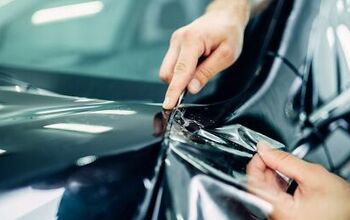

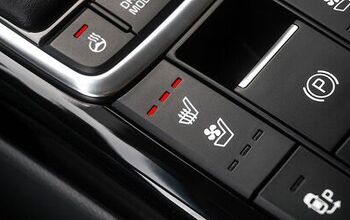


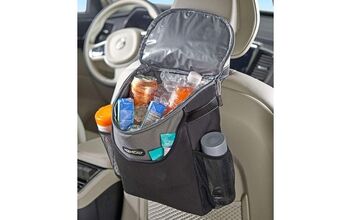


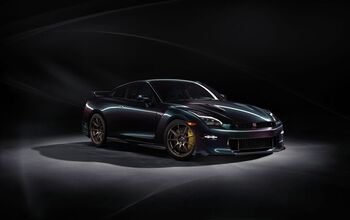

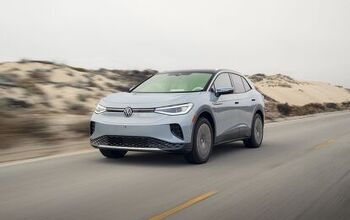


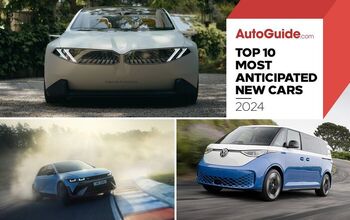

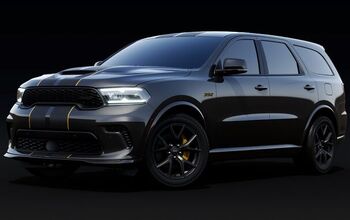
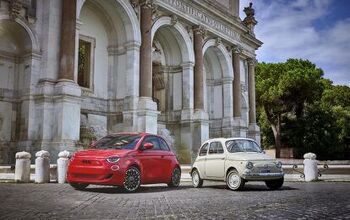
Comments
Join the conversation